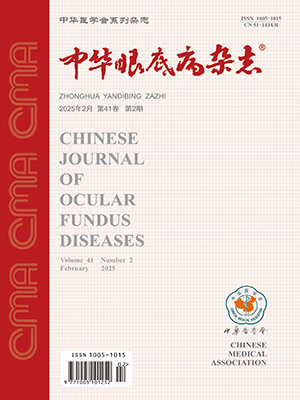| 1. |
Bidot S, Bruce BB, Saindane AM, et al. Asymmetric papilledema in idiopathic intracranial hypertension[J]. J Neuroophthalmol, 2015, 35(1): 31-36. DOI: 10.1097/WNO.0000000000000205.
|
| 2. |
Farrokhi Y, Sharif Kashani S, Aghsaei Fard M, et al. Optic canal size in idiopathic intracranial hypertension and asymmetric papilledema[J/OL]. Clin Neurol Neurosurg, 2019, 184: 105376[2019-05-22]. https://pubmed.ncbi.nlm.nih.gov/31176474/. DOI: 10.1016/j.clineuro.2019.105376.
|
| 3. |
Bidot S, Clough L, Saindane AM, et al. The optic canal size is associated with the severity of papilledema and poor visual function in idiopathic intracranial hypertension[J]. J Neuroophthalmol, 2016, 36(2): 120-125. DOI: 10.1097/WNO.0000000000000318.
|
| 4. |
Wall M, White WN 2nd. Asymmetric papilledema in idiopathic intracranial hypertension: prospective interocular comparison of sensory visual function[J]. Invest Ophthalmol Vis Sci, 1998, 39(1): 134-142.
|
| 5. |
Berdahl JP, Yu DY, Morgan WH. The translaminar pressure gradient in sustained zero gravity, idiopathic intracranial hypertension, and glaucoma[J]. Med Hypotheses, 2012, 79(6): 719-724. DOI: 10.1016/j.mehy.2012.08.009.
|
| 6. |
Abegg M, Fleischhauer J, Landau K. Unilateral papilledema after trabeculectomy in a patient with intracranial hypertension[J]. Klin Monbl Augenheilkd, 2008, 225(5): 441-442. DOI: 10.1055/s-2008-1027307.
|
| 7. |
Mader TH, Gibson CR, Otto CA, et al. Persistent asymmetric optic disc swelling after long-duration space flight: implications for pathogenesis[J]. J Neuroophthalmol, 2017, 37(2): 133-139. DOI: 10.1097/WNO.0000000000000467.
|
| 8. |
Mitchell C, Mathew S, Harris A, et al. Etiology, pathogenesis and management of idiopathic intracranial hypertension, and role of optic canal size in asymmetric papilledema: a review[J]. Eur J Ophthalmol, 2021, 31(3): 892-903. DOI: 10.1177/11206721211005709.
|




